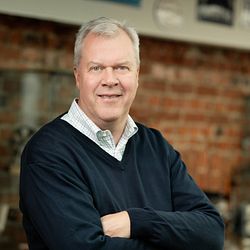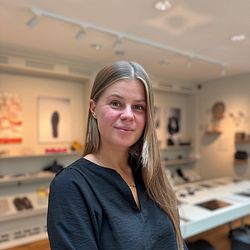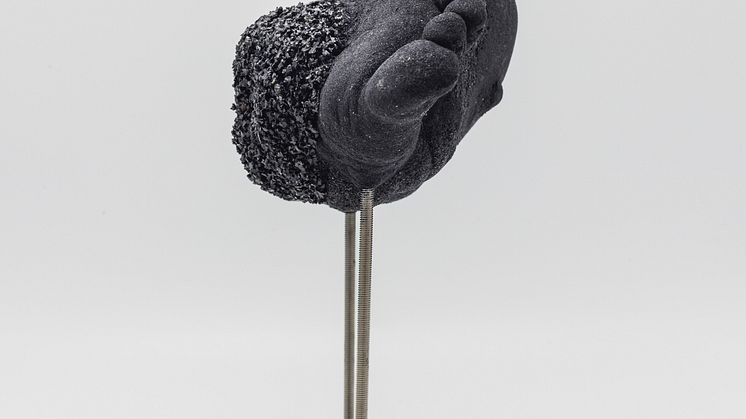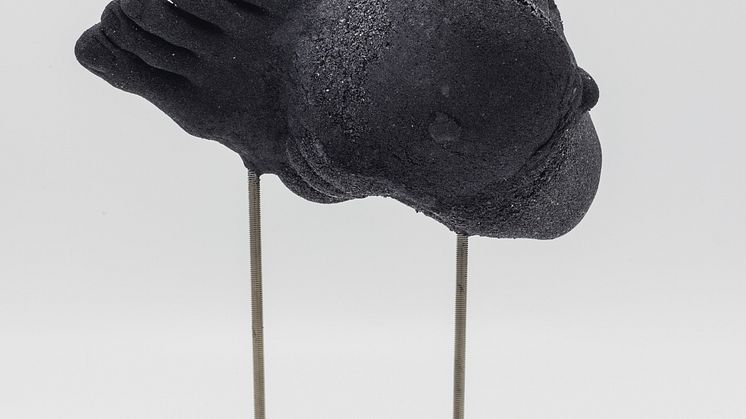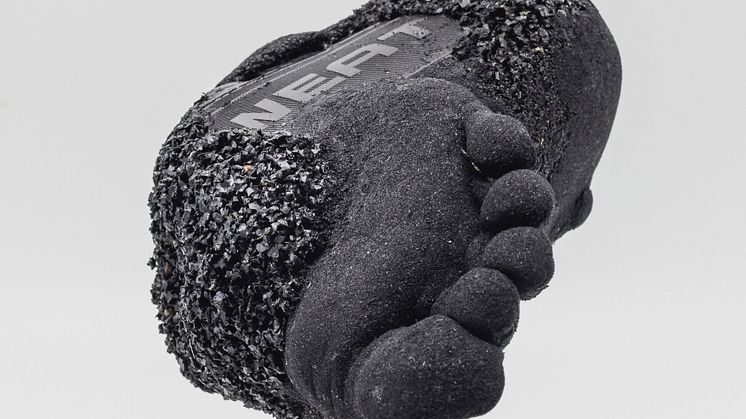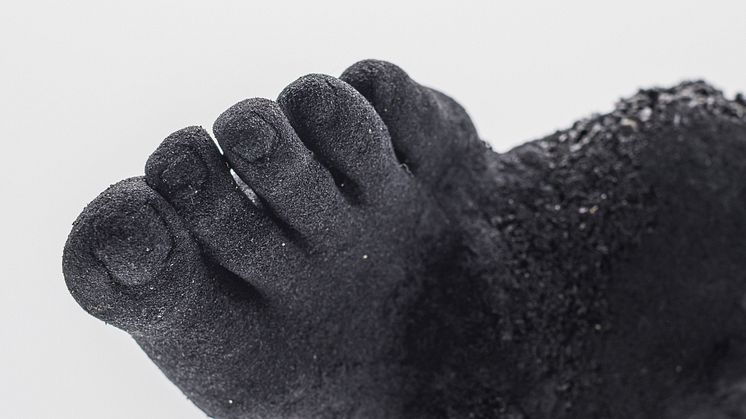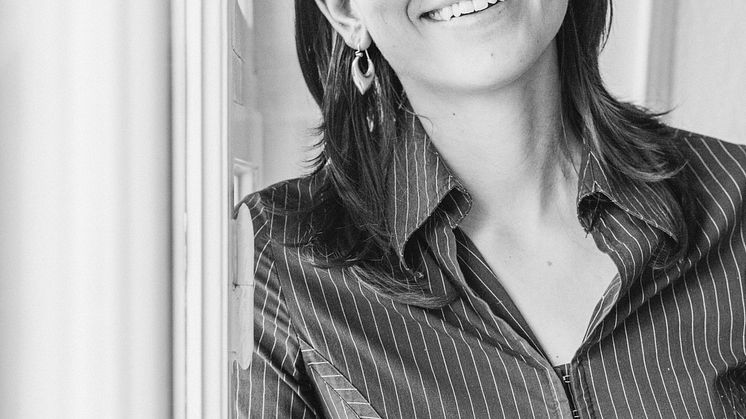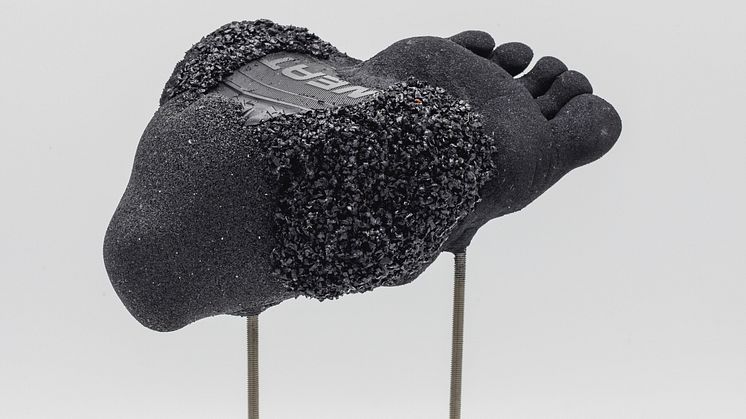
Nyhet -
A Knot in Motion
Alexandra Moreno was invited by Swedish Tyre Recycling to interpret tyre recycling through her artistic expression, as part of the art concept Art of Recycling. In connection with her invitation to exhibit at Stockholm Craft Week 2024—which aims to highlight contemporary craft and strengthen its position within the national and international art scenes—she created a sculpture titled A Knot in Motion, made from granulate and granulate powder derived from recycled tyres.
Alexandra Moreno is trained at Folkuniversitetet in Stockholm, Sweden, where she completed the one-year program in Silversmithing & Jewellery Design, followed by the bachelor’s program in Jewellery & Corpus: Ädellab at Konstfack. Creative work is fun, challenging, and enriching—something Alexandra believes everyone should experience. She is passionate about passing on her technical skills and showing others what an artistic process can look like.
In this sculpture, two contrasting elements—human and tyre—fluidly form a unified object, assembled entirely from discarded car tyres, blurring distinctions between the organic and the synthetic, the human and the non-human. By merging human forms with rubber, the body parts are abstracted, appearing to become part of the material itself or vice versa, dissolving the line between subject and object. The sculpture captures something non-living yet feels alive, highlighting how human life is intricately interwoven with the materials we create and discard.
The sculpture’s title comes from Donna Haraway, a pivotal figure in posthuman thought, who wrote, “the world is a knot in motion” to express the idea that all things in the world are connected through complex entanglements. In this view, existence itself is an ever-shifting network of relationships binding humans, animals, technologies, and ecosystems together in a dynamic web. In such an intricately connected world, to harm one part is ultimately to harm oneself. Haraway’s concept challenges linear and individualistic thinking, inviting us to see ourselves as part of a fluid network where every element both shapes and is shaped by others.
Through this human-tyre hybrid, we see ourselves reflected in what we often ignore—our interconnectedness with all matter, living or otherwise, in a world where boundaries continually shift and blend. Recognising our interdependence and our connections to others opens up new ways of seeing the world. It reveals that humankind and nature are not in competition, nor are they separate. By seeing the world as an interconnected whole—and thus moving beyond anthropocentric thinking—we can discover fresh perspectives on what it means to be human and reconsider how we relate to others around us, both human and non-human.
